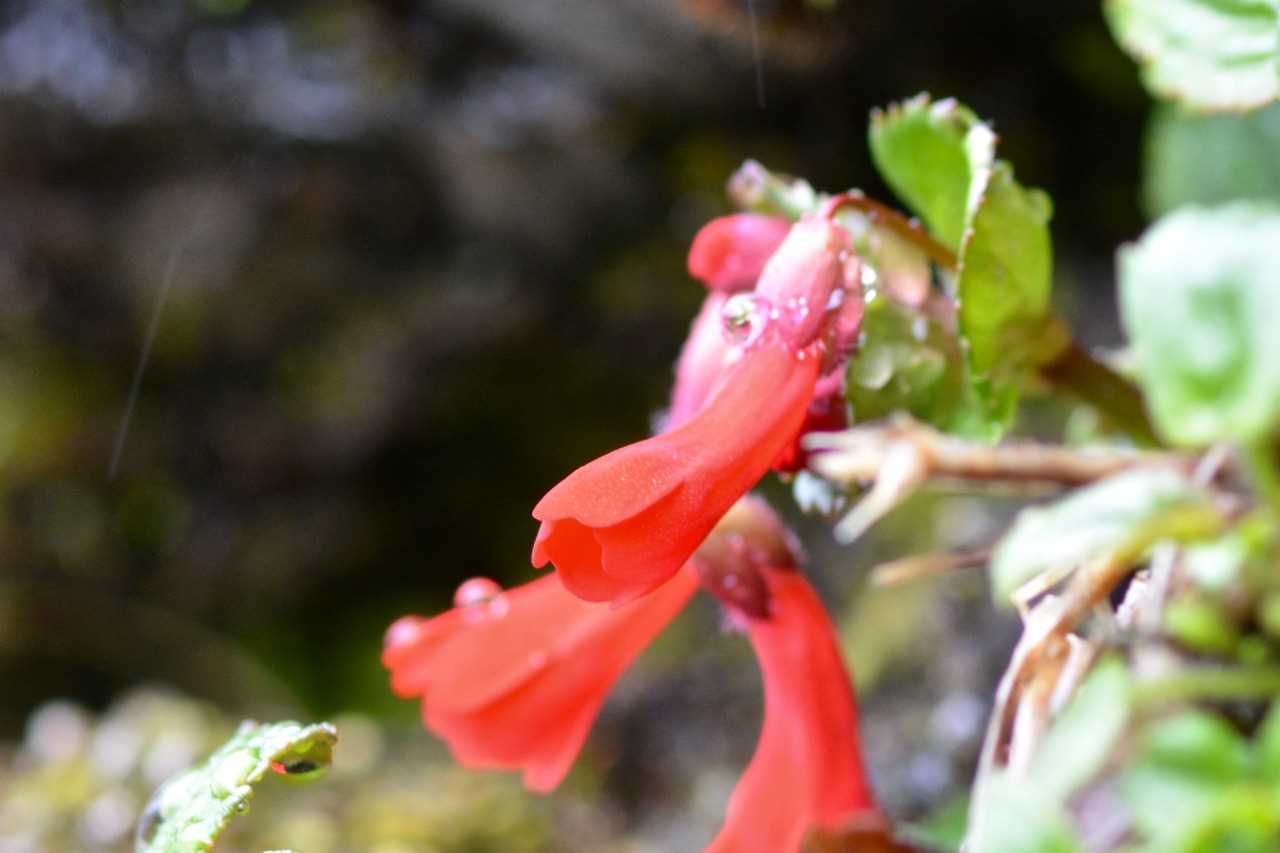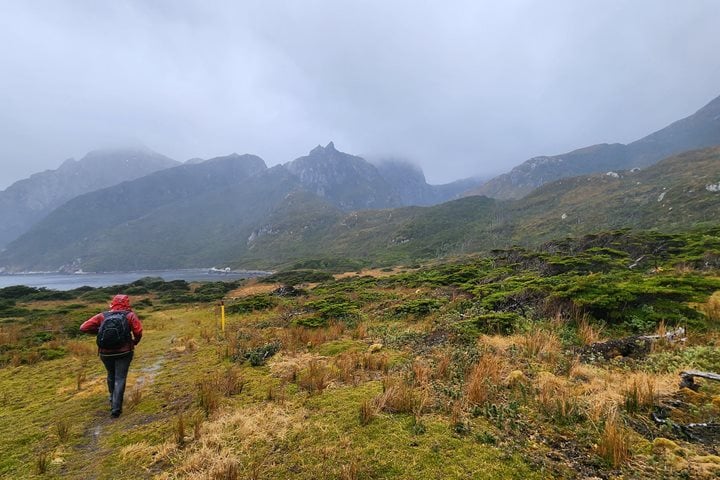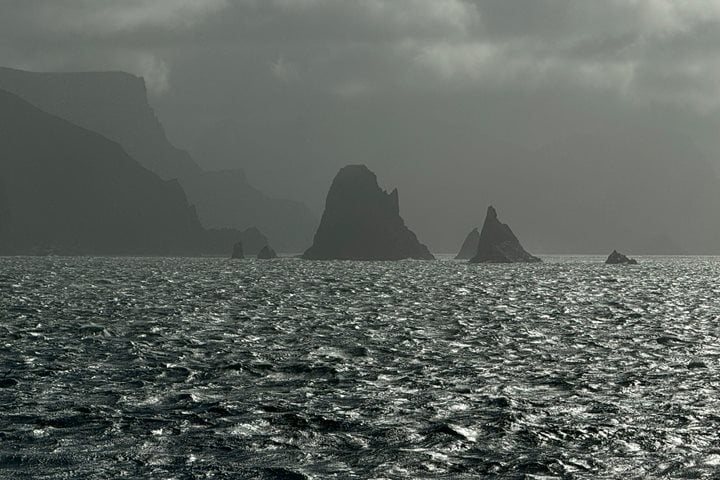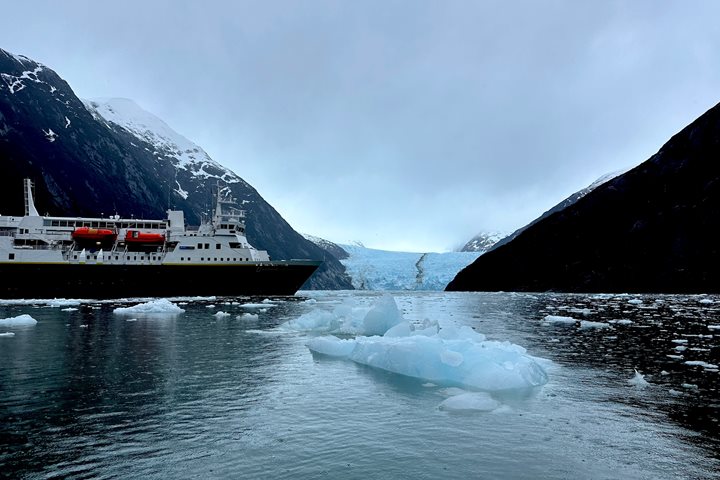We are now deep within the fiords of Tierra del Fuego cruising amongst high, snow-capped mountains and cliffs so steep they could have been cut with a knife! However, only the most vertical and smoothest slopes are without some sort of vegetation, whether it is warm comforters of golden moss or short stubbles of southern beech trees, life persists and thrives!
After breakfast we make a landing on a long beach at the end of a glacier carved valley. There is no glacier in sight any more, but there is a strange field of pale, dead trees behind the beach. This grove of southern beech feels like it has been dead for a long time, only the largest branches are left and in most cases there is no bark. What could have happened?
The answer is not too long in coming. There is an abrupt, sharp berm just behind the broad, low beach. Even with a well-established cover of grass and shrubs this is obviously not an accidental structure. A beautiful waterfall plunges from the cliffs on our left, there is ample evidence that its water was once impounded, although it has now breeched the berm exposing an underlying structure of stout, rough-cut poles. We are in fact facing a massive beaver dam!
Beavers were imported to southern Argentina from Canada in 1946 to develop a fur industry. When this did not bring the hoped-for wealth the animals were abandoned. With no natural predators the animals increased and spread. Currently, estimates place the beaver population somewhere between 100,000 and 200,000, which means that nobody really knows. Over the years the beavers have spread to Chile and they have expanded north out of Tierra del Fuego and onto continental South America proper, whereas Tierra del Fuego is a collection of islands separated by a web of narrow straits and fiords.
So, what is wrong with beavers? Beavers make dams to raise water levels so that the entrance to their den is underwater. The increase in water level drowns acres of trees. Beavers also feed on the bark of living trees, which kills many of the indigenous species that have never experienced this insult within the cause of their genetic history. With no natural predators to prey upon the introduced beavers, millions of acres of indigenous forests are at risk. At present, there are various plans to control or eradicate beaver; none have, as of yet, been particularly successful.
But, it is not all doom and gloom; there is plenty of native life here, much of it unique and beautiful. Where the trees are dead, lichens have taken over, swarming over the tree skeletons and across the bare-ground basking in their many species, shapes and colors. Above the ravaged trees the waterfall provides a particular delight, next to, but not in the torrent lives the ever-elusive ‘waterfall plant’ with a few delicate red flowers, forever moist, thriving in the only place they ever occur!
After lunch we make another stop, another long, low beach, to further explore the southern beech forest. There is a primitive, on again, off again boardwalk navigating through tall forest with lots of intriguing, low plants, some flowers, many mosses and cliffs dripping with water. Here and there are simple wooden bridges over small, sluggish stream. I hear comments that describe the scene as a massive Japanese Garden. For me, as I turn about, I see but one of the many faces of Tierra del Fuego, where mystery, magic and splendor are everyday events.







